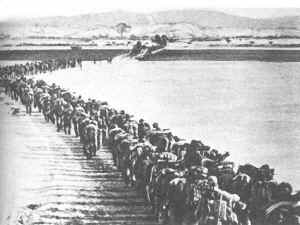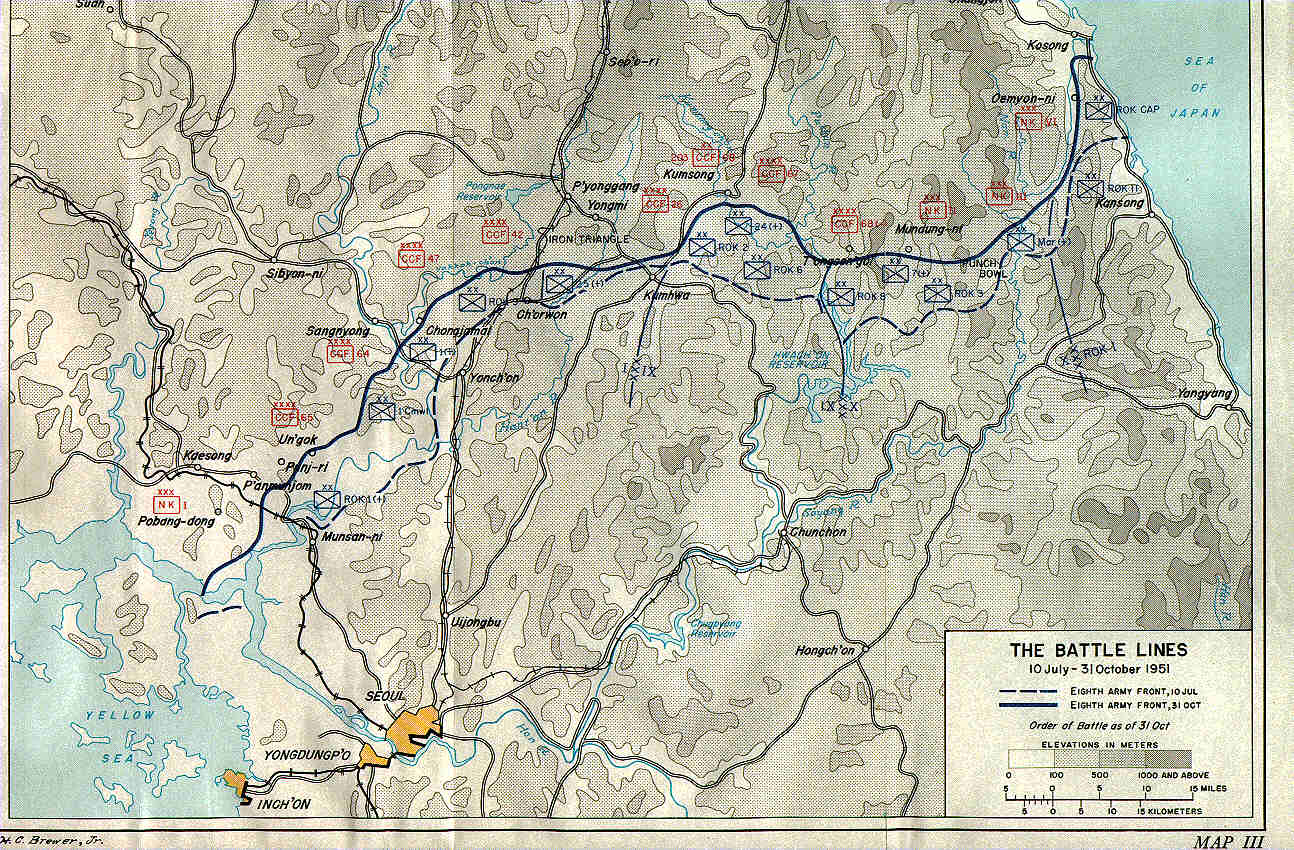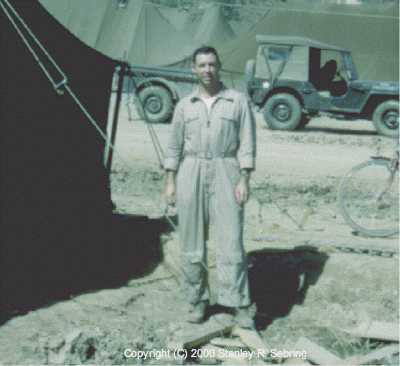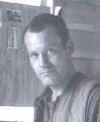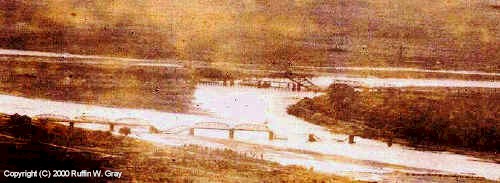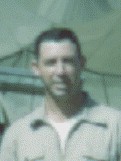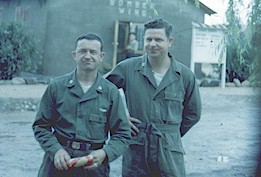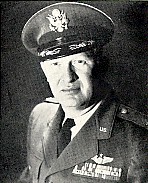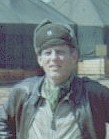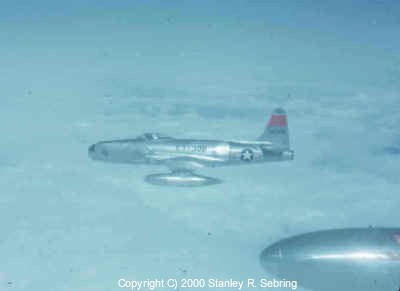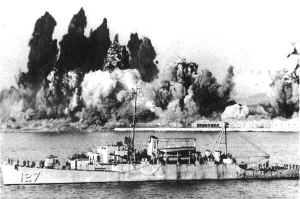The 15th Tactical Reconnaissance
Squadron was an organization that will always have a special spot
in my heart as there were so many of us in it who had been in the
15th Photo Recce Sq in North Africa and Italy during "the Big
War". So, I?ll tell you how I managed to return to the unit
in Korea.
Although I took a P-38
fighter replacement squadron to North Africa early in 1943 I was
reassigned to the 90th Photo Recce Wing as I had graduated from
the old Observation School at Brooks Field and flew with the 70th
Observation Group for a few months. After checking out in the F-4/5,
I managed to stay alive while flying over southern Europe and the
Balkans. Late in 1943 we moved to Italy, the Wing Headquarters set
up in San Severo and the squadrons were scattered around. Mine,
the 15th PR, was attached to 15th Air Force Headquarters at Ban.
We did long range target mapping and bomb damage assessment using
the F-5.
On the evening of 31
December 1943 there was a big party in the officers mess at 15th
Air Force Headquarters. It was more than just a New Year's Eve party,
it was a farewell party for General Doolittle who was moving to
England and a welcoming for General Twining, the new 15th AF CG.
There was more food and drink that night than we had even seen during
the past year. I was lucky to get a short "milk run" on
1 January but the next day I went out to map railroad yards in the
Po valley around Milan. The flak was quite heavy but not very accurate
at first. After about four runs down the valley one of the guns
put a round off to my left and just above. It took out my left supercharger
and a few other items, including a goodly bit of the left side of
my face. It was a beautiful clear day so I shut the cameras down
and headed for Corsica, the nearest safe haven as the Germans had
evacuated the island. I couldn't try for home as the right engine
was heating up. Got the bird down okay, saved my film and a week
later they had me back at Ban. I thought that after my face was
patched up they would send me home; however, all that I got was
a Purple Heart, another Air Medal and instructions to stay close
to our operations shack at the airport as Col. Roosevelt had so
ordered.
About a week later, while
I was snoozing in the sun, a B-25 landed and taxied up to the shack.
The pilot cut the left engine, stuck his head out the window and
called to me. It was Col. Roosevelt and he told me to get aboard
as he wanted me to go with him to Algiers and bring the plane back.
That worried me a bit as he was a rated navigator but not a pilot
and I had been warned to never let him take the controls whenever
he was flying with me. I was relieved greatly when I climbed in
and he moved over to the copilot?s seat and told me to take over.
We arrived at Maison Blanc Airdrome without any interruptions by
roaming Ju-88?s and I told Roosevelt that I would take the B-25
back to San Severo the following morning. He really shocked me then
when he said that I was to fly him and the Allied Forces staff to
England in a special B-17.
It took
a few days to prepare for the flight but the morning of our departure
was quite an event. I had no idea that we had so many dignitaries
in the theater. Our passengers were Gen. Smith, (Ike's Chief of Staff);
Col. Roosevelt; Kay Summersby, (Ike's secretary); a dozen other senior
officers; and a sergeant handling the dogs of Eisenhower, Smith and
Roosevelt. We managed to complete the flight with only minor problems
and in due time I returned and delivered the B-17 to a group near
San Severo. All of which is minor history except that it was while
I was away that Col. Polifka took command of MAPRW.
Col. Polifka visited
our squadron early in March 1944 and brought with him orders promoting
me to Captain. He laughed when he gave them to me and said that
I would have to work four times as much from then on as the orders
were dated 29 February. Neither of us knew how true that would be
as it did not happen again until he promoted me in Korea in 1951.
At that time, when he gave me the promotion order, he reached in
his pocket and brought out a set of oak leaves. I went right back
to my tent and scratched "Pop" on the back of each and
they are in a display case here in my office.
To get back to Italy,
I flew my 50th mission of 15 March 1944. It was long one, to look
at the ball bearing plant in Regensberg, Germany and to make a short
run over Cassino on my way home. The heavies of 15th AF hit Cassino
early in the morning, the mediums of 12th AF were to follow up in
the afternoon and a few photos would help to decide which did what.
I got in and out of Regensberg without much opposition as the 8th
AF was striking north of there. I breathed a sigh of relief as I
passed over Rome and began my descent to pass over Cassino at a
lower altitude as the German fighters were supposed to be on the
ground refueling. Apparently there were three Bf-109?s that didn?t
get the word and they proceeded to cut me to pieces before breaking
away. They did leave me one good engine, I managed get to a field
north of Naples and the war was finally over for me. Was in a hospital
at Naples for a month, aboard a hospital ship for a second month
and landed at Norfolk three days after D-Day. And a sad part was
the fact that I didn?t get to see Col. Polifka again before they
shipped me out.
I went through a varied
group of schools and assignments after WWII and was in the 18th
Fighter Group at Clark AFB when the Korean War started. We were
flying the F80C at that time but the Group had been equipped with
the F-51 until shortly before I joined them. They put us back into
old Mustangs from Air Guard units, mine had been junked by the North
Dakota National Guard. Again, I managed to get through a tour that
included walking back from North Korea as a FAC with the 21st Infantry.
After my last mission I caught the first available courier flight
to Tokyo and checked into the personnel center at Fuchu to wait
for my ticket home. I should have hidden under my bed until they
had my ticket ready. Instead, I went into town to one of the R&R
hotels for some decent food for a change. While sitting in the bar
counting my blessings, in walked "Whitey" Meyers who had
been in the 15th PRS in Italy. He told me that he and Col. Polifka
had just come over to form a recce wing. I mentioned that I had
just finished a tour in Mustangs with the 18th FB Gp and was on
my way home. I also told him that Frank Bullard, who had been with
us in Italy, was in the 18th Gp and would finish his tour in a few
weeks. We sat there talking until the bar closed and I went back
to Fuchu.
Three days passed and
I still didn't get a Pan Am ticket but was given orders to report
to the 543rd Tac Support Gp at K-2. I rode the courier to K-2 and
after landing there I walked down the ramp to find my destination.
When I found it I was truly shocked as there was a squadron of photo
Mustangs parked in front of the building. The length of a combat
tour had just been extended to 125 missions and I was afraid that
I was going to have to do 25 more before I could go home. I entered
the building and to my most pleasant surprise saw Col. Polifka sitting
at a desk. He said, "Come on in, Dewey, I've been waiting for
you. I hear you have been flying Mustangs". I replied, "I
saw those Mustangs out front and I would prefer to never have to
get in one again, you just can't do it to me. Other than the past
months in them with the 18th Ground I've flown nothing but jets
since I got out of the P-38. If you had some jets it would be different
situation." He laughed and said that he had been waiting for
me to say that as a squadron of RF-80?s had just been delivered
to Komaki and that K-2 would be my new home.
Well, we got everything
moved to K-2 and put the RF-80 squadron into operation. Things went
fairly well considering that we had many new pilots fresh out of
cadet school and about as many reservists who hadn't been near an
airplane since VJ Day. I didn't see Col. Polifka for a couple of
weeks until we met in the mess hail one evening. He asked when would
I be ready to fly and when I told him that I had flown my first
mission that day he wanted to know how successful it was. I told
him that I didn't accomplish much as I had only 12 targets when
I usually covered 20 to 25 per sortie in Europe during WW II. Then
he told me that the old Wing we were replacing had been covering
only one target per mission and that was the reason he had been
searching for those of us he had known in WW II.
The war went on, some
of it simple but most of it down right dirty. It went on, my 125th
mission was flown on 29 June and all the way back to K-2 I sweated
it out due to the memories of my last mission in Italy. As I pulled
into my hardstand and saw Pop standing there with all the Wing PR
people I realized it really was over and I had made it in one piece.
Pop climbed up on the wing and as I raised up in the cockpit he
took my hand and said, "Well, Major Ballard, you have completed
two combat tours, what are you going to do next?" I replied,
"If you will let me have a few days in Tokyo I'll be ready
for a third tour". He shook my hand again and said, "I
knew you would say that", and then in a whisper said, "But
I'll be dammed before I'll let you". He climbed down, walked
away and I never saw him again.
The next
day we had a group of visiting congressmen who wanted to see how quickly
we could respond to a request for photos of a front line target. I
dressed in all the emergency gear that we never wore and was on "stand
by" for the mission. I was "briefed", along with the
visitors, and they followed me through a walk'around inspection, some
even climbed up on the wings. I guess they must have distracted me
a bit because I slipped and fell as I was stepping down into the cockpit,
the stick was aft and it ripped into my belly. There was an air evac
airplane loading at base ops, they put me aboard it and I got more
than the "few days in Tokyo.
About a
week later someone from 5th Air Force called to tell me of the death
of Col. Polifka. There are no words that can truly express how I felt
then, or even right now. Flying can be such a pleasant past time but
it can take your friends away so suddenly, throw in a war and it can
multiply your heart aches to such a great extent.
